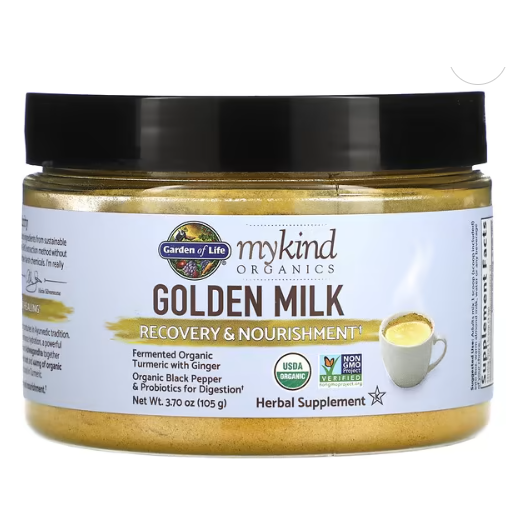As summer rolls in, many of us eagerly anticipate long, sunny days and outdoor adventures. Amidst the excitement, it’s crucial to remember the importance of maintaining our health, especially when it comes to Vitamin D. Often referred to as the "sunshine vitamin," Vitamin D plays a vital role in our overall well-being. Here’s why ensuring adequate Vitamin D intake is particularly important during the summer months.
The Role of Vitamin D
Vitamin D is essential for several critical functions in the body:
-
Bone Health:
- Vitamin D plays a crucial role in calcium and phosphate metabolism, essential for maintaining bone health. It helps the body absorb calcium, promoting the growth and maintenance of strong bones .
-
Immune Function:
- Adequate levels of Vitamin D are essential for optimal immune function. It modulates the immune system, enhancing pathogen-fighting capabilities while preventing excessive inflammatory responses that can lead to autoimmune diseases .
-
Chronic Disease Prevention:
- Vitamin D deficiency has been associated with a higher risk of various chronic diseases, including cardiovascular disease, diabetes, and certain cancers. Ensuring sufficient Vitamin D levels may help reduce the risk of these conditions .
Sunlight and Vitamin D Synthesis
Exposure to sunlight is the most natural way to obtain Vitamin D. When the skin is exposed to UVB radiation from the sun, 7-dehydrocholesterol in the skin is converted to previtamin D3, which then isomerizes into Vitamin D3 (cholecalciferol) . Factors such as season, latitude, skin pigmentation, and sunscreen use significantly influence this synthesis .
Historical and Evolutionary Perspectives
The importance of Vitamin D has been recognized for centuries. Historical records show that ancient civilizations understood the benefits of sunlight for health. For instance, ancient Greeks and Romans used sunlight to treat various ailments. The link between sunlight exposure and the prevention of rickets, a disease caused by Vitamin D deficiency, was established in the early 20th century .
Modern-Day Considerations
Despite the known benefits of Vitamin D, modern lifestyles often limit our sun exposure. Factors such as indoor living, extensive use of sunscreens, and geographical location can contribute to widespread Vitamin D deficiency . In the United States, for example, the Centers for Disease Control and Prevention (CDC) reported that 32% of children and adults have insufficient levels of Vitamin D .
Strategies to Prevent Vitamin D Deficiency
To combat Vitamin D deficiency, a three-part strategy is recommended:
-
Sensible Sun Exposure:
- Moderate sun exposure can help maintain adequate Vitamin D levels without increasing the risk of skin cancer. It is essential to find a balance that allows for sufficient Vitamin D synthesis while protecting the skin from excessive UV radiation .
-
Dietary Sources and Fortification:
- Incorporating foods rich in Vitamin D, such as fatty fish, fortified dairy products, and certain mushrooms, can help improve Vitamin D status. Food fortification programs can also play a significant role in addressing Vitamin D deficiency on a larger scale .
-
Supplementation:
- Vitamin D supplements can be an effective way to ensure adequate intake, especially for individuals at higher risk of deficiency. It is important to follow recommended dosages to avoid potential toxicity .
Conclusion
Vitamin D is vital for maintaining overall health, particularly during the summer when sun exposure can naturally boost Vitamin D levels. By understanding the importance of Vitamin D and implementing strategies to maintain adequate levels, we can enjoy the benefits of this essential nutrient while reducing the risk of deficiency and its associated health consequences.
References
- Holick M. Phylogenetic and evolutionary aspects of vitamin D from phytoplankton to humans. In: PKT Pang and MP Schreibman (eds), Vertebrate Endocrinology: Fundamentals and Biomedical Implications. Academic Press, Inc (Harcourt Brace Jovanovich) Orlando, FL 1989;3:7-43.
- Holick MF. Vitamin D: A millennium perspective. J Cell Biochem. 2003;88:296–307. doi: 10.1002/jcb.10338.
- Pasanen AL, Yli-Pietila K, Pasanen P, Kalliokoski P, Tarhanen J. Ergosterol content in various fungal species and biocontaminated building materials. Appl Environ Microbiol. 1999;65:138–42.
- Kalaras MD, Beelman RB, Holick MF, Elias RJ. Generation of potentially bioactive ergosterol-derived products following pulsed ultraviolet light exposure of mushrooms (Agaricus bisporus). Food Chem. 2012;135:396–401. doi: 10.1016/j.foodchem.2012.04.132.
- Holick MF, Chen TC, Lu Z, Sauter E. Vitamin D and skin physiology: a D-lightful story. J Bone Miner Res. 2007;22(Suppl 2) –33. doi: 10.1359/jbmr.07s211.
- Holick MF, Tian XQ, Allen M. Evolutionary importance for the membrane enhancement of the production of vitamin D3 in the skin of poikilothermic animals. Proc Natl Acad Sci U S A. 1995;92:3124–6. doi: 10.1073/pnas.92.8.3124.
- Tian XQ, Chen TC, Matsuoka LY, Wortsman J, Holick MF. Kinetic and thermodynamic studies of the conversion of previtamin D3 to vitamin D3 in human skin. J Biol Chem. 1993;268:14888–92.
- Holick MF. Resurrection of vitamin D deficiency and rickets. J Clin Invest. 2006;116:2062–72. doi: 10.1172/JCI29449.
- Brennemann J, McQuarrie I. Brennemann's practice of pediatrics: W.F. Prior; 1946.
- Mozołowski W. Jędrzej Sniadecki (1768-1838) on the Cure of Rickets. Nature. 1939;143:121. doi: 10.1038/143121a0.
- Palm TA. The geographical distribution and etiology of rickets. Practitioner. 1890;45:270–342.
- Huldschinsky K. Heilung von Rachitis durch künstliche Höhensonne. Dtsch Med Wochenschr. 1919;45:712–3. doi: 10.1055/s-0028-1137830.
- Huldschinsky K. The ultra-violet light treatment of rickets. Alpine Press New Jersey, USA 1928;3–19.
- Hess AF, Unger LJ. The cure of infantile rickets by sunlight. J Am Med Assoc. 1921;77:39. doi: 10.1001/jama.1921.02630270037013.
- Steenbock H, Black A. The reduction of growth-promoting and calcifying properties in a ration by exposure to ultraviolet light. J Biol Chem. 1924;61:408–22.
- Hess AF, Weinstock M. Antirachitic properties imparted to inert fluids and to green vegetables by ultra-violet irradiation. J Biol Chem. 1924;62:301–13.
- Holick MF. Vitamin D: the underappreciated D-lightful hormone that is important for skeletal and cellular health. Curr Opin Endocrinol Diabetes Obes. 2002;9:87–98. doi: 10.1097/00060793-200202000-00011.
- Rajakumar K, Greenspan SL, Thomas SB, Holick MF. SOLAR ultraviolet radiation and vitamin D: a historical perspective. Am J Public Health. 2007;97:1746–54. doi: 10.2105/AJPH.2006.091736.
- Holick MF. Biologic effects of light: historical and new perspectives. Biologic Effects of Light. Edited by Holick MF and Jung EG. Boston: Kluwer Academic Publisher 1999:11-32.
- Lightwood R, Sheldon W, Harris C. Hypercalcaemia in infants and vitamin D. BMJ. 1956;2:149. doi: 10.1136/bmj.2.4985.149.
- Tshibangu K, Oosterwijck K, Doumont-Meyvis M. Effects of massive doses of ergocalciferol plus cholesterol on pregnant rats and their offspring. J Nutr. 1975;105:741–58.
- Holick MF. Vitamin D deficiency. N Engl J Med. 2007;357:266–81. doi: 10.1056/NEJMra070553.
- Pober BR. Williams-Beuren syndrome. N Engl J Med. 2010;362:239–52. doi: 10.



